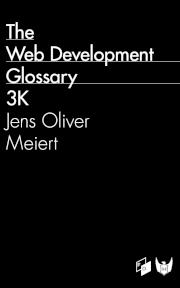Web Design: 10 Additional Research Findings You Should Know
Published on June 5, 2008 (↻ August 17, 2024), filed under Design (RSS feed for all categories).
Following up on last year’s post on web design research, here’s another collection of research findings, this time featuring further reading. I try to watch the work of the Association for Computing Machinery, Human Factors International, and the like.
It is important to establish trust with users from their very earliest experience with your site. This is particularly true in commerce, medical, and insurance where the first impression of trust has a lasting effect. Also, a complex design can mean substantial differences in initial trust, contrary to a simple design.
—Lee and See: Trust in Automation: Designing for Appropriate Reliance (PDF, 340 KB) (2004).
[…]presenting users with alternative design solutions, subjective ratings are less prone to inflation and give rise to more and stronger criticisms when appropriate.[…]results also suggest that usability testing by itself, even when multiple designs are presented, is not an effective vehicle for soliciting constructive suggestions about how to improve the design from end users.
—Tohidi, Buxton, et al.: Getting the Right Design and the Design Right: Testing Many Is Better Than One (PDF, 556 KB) (2006).
There are three groups of internet shoppers: Risk-averse doubters (15% of the population), open-minded shoppers (40%), and reserved information seekers (45%).
—Barnes, Bauer, et al.: Segmenting Cyberspace: A Customer Typology for the Internet (2007).
2-dimensional graphs are interpreted better than either 3-dimensional graphs or spreadsheets. Color data presentations are a bit easier to interpret than monochrome ones.
—Keller, Gerjets, et al. (2006).
Menu-driven interfaces are perceived as easier to use. Icon-based interfaces are perceived as more useful.
—Saadé and Otrakji (2007).
ClearType fonts are easier to both scan and read than non-ClearType fonts: Speed of performance and reading speed is significantly faster with ClearType.
—Dillon, Kleinman, et al.: Visual Search and Reading Tasks Using ClearType and Regular Displays: Two Experiments (PDF, 208 KB) (2006).
Older adults have more difficulty than younger adults when searching for information on the Web. This difficulty is related to the selection of inefficient search strategies, which may be attributable to a lack of knowledge about available Web search strategies.
—Stronge, Rogers, and Fisk: Web-Based Information Search and Retrieval: Effects of Strategy Use and Age on Search Success (2006).
A user’s beliefs about their own capabilities is a stronger predictor of frustration with computer challenges than age and gender.
—Bessiere, Newhagen, et al.: A Model for Computer Frustration: The Role of Instrumental and Dispositional Factors on Incident, Session, and Post-Session Frustration and Mood (2006).
Mood matters. Consumers who were in a good mood spent more time browsing and less time to make a purchase than consumers who were in a poor mood.
—Xia (2002).
Men are slightly more intense internet users than women, men use the internet more than women as a destination for recreation, and men pursue and consume information online more aggressively than women.
—Fallows: How Women and Men Use the Internet (PDF, 816 KB) (2005).
About Me

I’m Jens (long: Jens Oliver Meiert), and I’m a web developer, manager, and author. I’ve worked as a technical lead and engineering manager for small and large enterprises, I’m an occasional contributor to web standards (like HTML, CSS, WCAG), and I write and review books for O’Reilly and Frontend Dogma.
I love trying things, not only in web development and engineering management, but also in other areas like philosophy. Here on meiert.com I share some of my experiences and views. (I value you being critical, interpreting charitably, and giving feedback.)
Comments (Closed)
-
On June 6, 2008, 10:05 CEST, Andrei Eftimie said:
Thanks for the informative list.
Very good ideas and insight through them
-
On August 17, 2008, 8:10 CEST, Yuri said:
Great post. It’s entertaining and informative. Thanks for the info!
-
On August 21, 2008, 13:31 CEST, Drenthe said:
Yep, this seems all very true to me. In particular point 1.
-
On January 26, 2010, 2:09 CET, Lank said:
Do you have the full references for Keller, Gerjets, Sheiter, and Gorsaffsky (2006) and Saadé and Otrakji, (2007)?
Read More
Maybe of interest to you, too:
- Next: Thoughts on Email
- Previous: Optional Tags in HTML 4
- More under Design
- More from 2008
- Most popular posts
Looking for a way to comment? Comments have been disabled, unfortunately.

Get a good look at web development? Try WebGlossary.info—and The Web Development Glossary 3K. With explanations and definitions for thousands of terms of web development, web design, and related fields, building on Wikipedia as well as MDN Web Docs. Available at Apple Books, Kobo, Google Play Books, and Leanpub.
